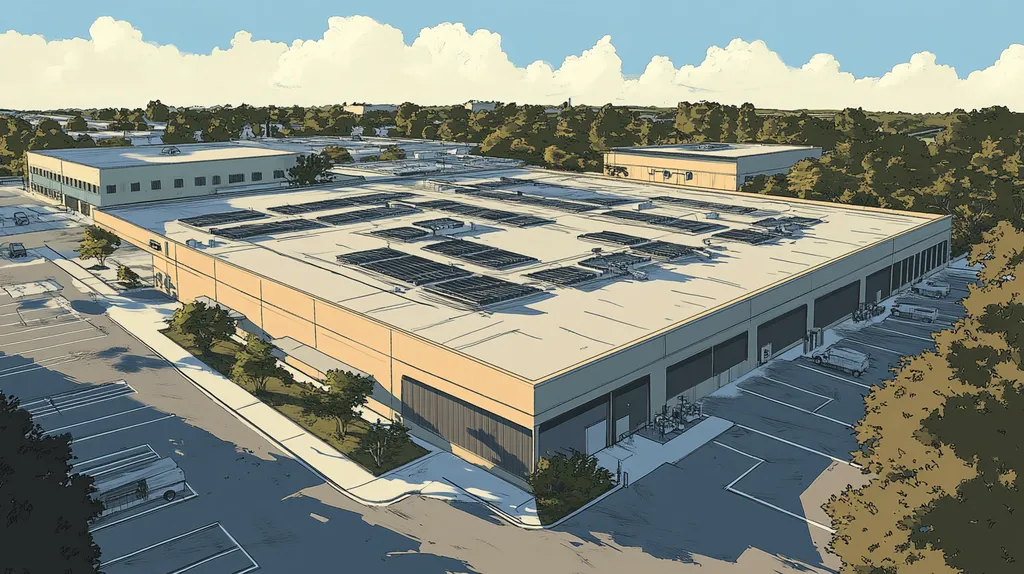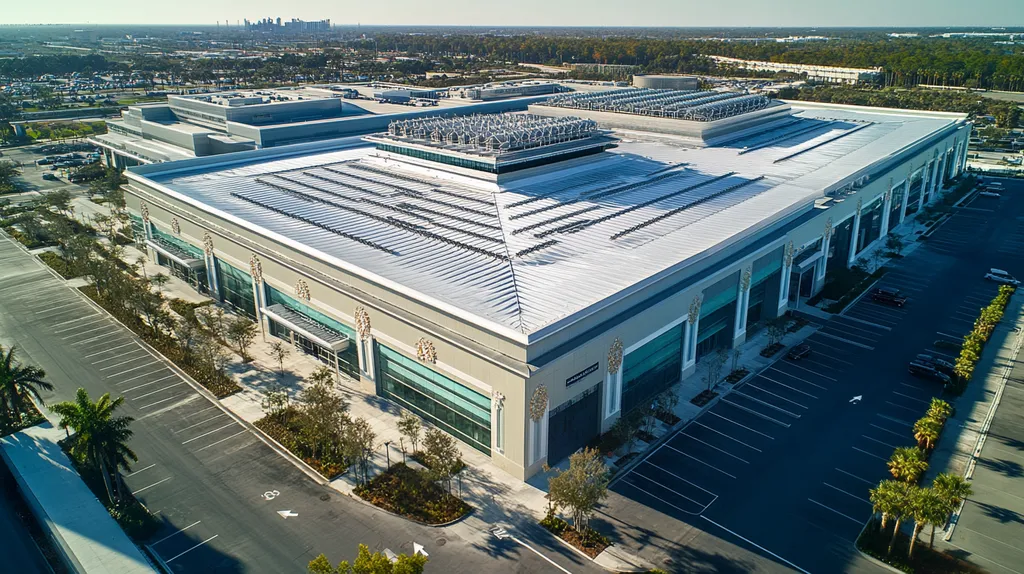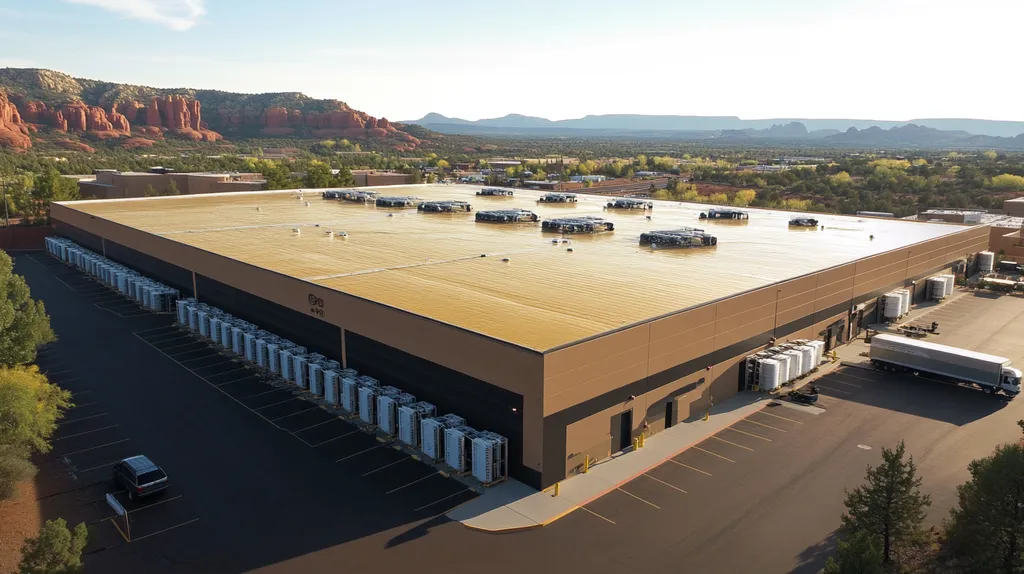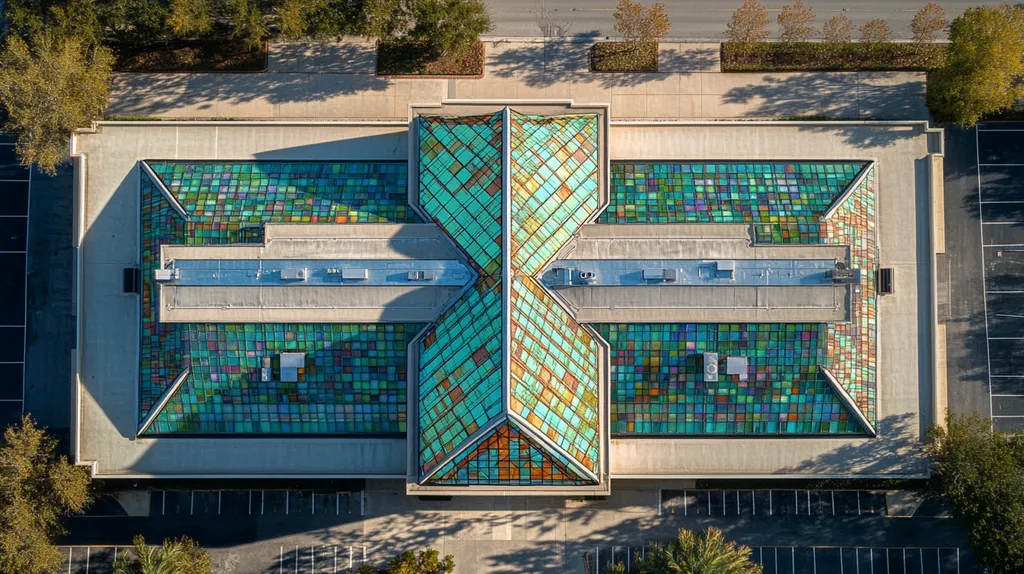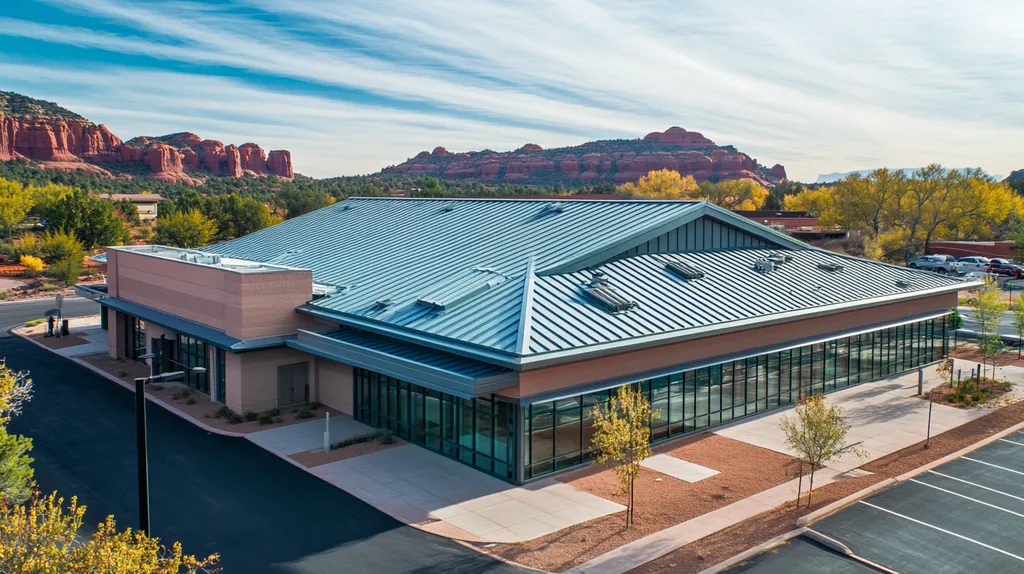Commercial roof installations disrupt over 60% of normal business operations, with poorly managed projects causing an average of $50,000 in unexpected costs and productivity losses per week. For facility managers, effectively managing these disruptions can mean the difference between a smooth transition and a costly operational nightmare.
From performance factors and financial considerations to compliance requirements and risk management, successful navigation of roofing projects demands a systematic approach focused on minimizing impact while maintaining safety and quality.
This comprehensive guide provides facility managers with actionable solutions for anticipating, planning, and controlling disruptions throughout the installation process.
SECTION 1: PERFORMANCE FACTORS
Disruptions during the installation of commercial roofs can significantly affect both facility operations and project deadlines. In fact, 60% of roofing delays stem from miscommunication and poor planning. By pinpointing potential disruption points early in the process, facility managers can save on costs and reduce production downtime. This section delves into crucial performance factors, covering identification of disruption points, evaluation of roofing materials and methods, and the influence of weather and site conditions on installation effectiveness.
Identifying and Assessing Disruption Points in Roofing Tasks
Minimizing risks during roof installation starts with understanding potential disruption points. Key areas, such as access paths, staging locations, and noise levels, can create obstacles. For instance, inadequate staging areas often result in equipment congestion, slowing down the entire installation process.
Before installation kicks off, facility managers should perform a thorough site assessment to identify any limited access points that could obstruct material delivery or worker movement. Addressing these challenges early allows for thoughtful planning and ensures a smoother workflow.
Maintaining clear communication with contractors throughout the project is crucial. Regular progress meetings can help surface issues as they arise, enabling quick adjustments to keep the project on track. By proactively managing these disruption points, managers enhance both site safety and efficiency.
Key Action Items
Evaluating Roofing Material and Installation Impact on Operations
The selection of roofing materials and installation techniques can deeply influence a facility’s operational continuity. For example, some membrane systems require extended curing times, which can delay roof accessibility and lead to unexpected operational challenges.
Facility managers should carefully assess how roofing materials interact with the existing building structure. Opting for lighter materials may reduce structural stress, but could compromise durability. Collaborating with roofing experts during the selection process is key to striking a balance between cost and long-term performance.
Additionally, understanding different installation methods is vital for anticipating potential disruptions. Mechanically fastened systems can often be installed more quickly than adhered systems, speeding up project completion and minimizing downtime.
Key Action Items
Assessing Weather and Site Conditions Affecting Performance
Weather can greatly impact roofing project timelines. Rain, snow, and extreme temperatures create hazardous conditions which can lead to significant installation delays. Research indicates that adverse weather contributes to nearly 30% of project delays in the roofing sector.
Facility managers need to account for seasonal weather trends when scheduling installations. For example, undertaking roofing work during hurricane season heightens the risk of unforeseen delays and safety challenges.
Moreover, site conditions, like slope and drainage, play a crucial role in both installation processes and long-term roof performance. A poorly draining site can result in water pooling, threatening the roof’s future integrity. Conducting a thorough pre-installation site assessment of these elements is essential.
Key Action Items
SECTION 2: FINANCIAL CONSIDERATIONS
Financial planning is vital in managing commercial roof installation disruptions, as unexpected issues can drive costs significantly higher. A 2022 report found that such delays could push projects over budget by an average of 20%. Facility managers should take proactive steps to mitigate potential disruptions to protect their financial resources. Key considerations involve budgeting for unforeseen delays, weighing the costs and benefits between phased versus full roof replacements, and evaluating the financial impacts of downtime.
Budget Planning for Disruption Mitigation Measures
Anticipating potential interruptions is essential when planning budgets for roof installations. Allocating funds for risk management tactics can significantly minimize delay-related costs. Utilizing temporary covers to shield vulnerable areas helps prevent water damage, ultimately saving money.
Investing in quality tools and materials that enhance weather resistance is equally important. A good rule of thumb is to set aside at least 10% of the budget specifically for unexpected disruption-related expenses, ensuring there are funds available for additional labor or materials when necessary.
Establishing clear communication with contractors about timelines and expectations is also critical for financial efficiency. Including penalties for delays in contracts can incentivize timely completion and keep projects aligned with schedules.
Key Action Items
Cost-Benefit Analysis of Phased vs. Full Roof Replacement
Understanding whether to pursue a phased or a full roof replacement has significant financial implications. Phased replacements can stretch costs over time, which alleviates immediate strain, but may lead to ongoing maintenance expenses and repeated disruptions.
In contrast, while a full replacement requires a larger upfront investment, it often means a longer lifespan and fewer immediate operational concerns. A thorough cost-benefit analysis that includes labor, material costs, and anticipated downtime is crucial for making the best choice.
While phased projects may seem budget-friendly initially, they could incur ongoing costs and inconvenience. On the other hand, full replacements may pose a higher initial price but afford peace of mind and minimize future interruptions.
Key Action Items
Financial Impact of Downtime and Productivity Loss
The financial ramifications of downtime during roof installation can be significant. Companies can incur losses of thousands of dollars per hour when operations are halted. Sectors such as retail and warehousing are particularly vulnerable to revenue drops during extensive roofing projects.
Quick assessment of potential losses is critical. Facility managers should estimate daily revenues and operational costs impacted by downtime to justify any necessary budget adjustments due to disruptions.
Moreover, maintaining open lines of communication with tenants or customers about project schedules helps manage expectations and reduce financial fallout. By scheduling work during off-peak hours, such as nights or weekends, businesses can maintain operations while progressing with roofing work, thereby safeguarding their financial stability.
Key Action Items
SECTION 3: COMPLIANCE REQUIREMENTS
Understanding compliance requirements is essential for effectively managing disruptions during commercial roof installation. Facility managers must navigate crucial regulations from OSHA, adhere to local building codes, and maintain meticulous documentation. Non-compliance can lead to hefty fines, safety risks, and project delays that negatively impact budgets and timelines. For instance, thousands of citations for non-compliance were reported last year, highlighting the need for strict adherence to these guidelines. This section focuses on essential compliance factors that facility managers must consider to ensure smooth project execution.
Understanding OSHA and Safety Regulations During Installation
OSHA (Occupational Safety and Health Administration) regulations are vital for safeguarding workers during roof installations. These guidelines outline practices to minimize the risk of accidents and injuries, making it imperative for facility managers to ensure that their roofing contractors are well-versed in these standards.
A significant requirement is the implementation of fall protection measures. For instance, if workers are on roofs over six feet high, appropriate safety systems like guardrails, safety nets, or personal fall arrest systems must be established. Neglecting these provisions can lead to serious injuries or even fatalities.
Before the project kicks off, conducting safety briefings is essential. This helps all workers understand safety protocols and ensures they have the necessary personal protective equipment (PPE). Additionally, regular safety inspections should be a fundamental part of compliance strategies to maintain a secure work environment.
Key Action Items
Ensuring Adherence to Local Building Codes and Permits
Local building codes are critical in roofing projects and vary based on location. These regulations are established to guarantee structural integrity and safety, so non-compliance can result in severe setbacks. Facility managers should verify that their contractors fully understand the codes pertinent to their specific area.
Different regions may mandate specific materials or installation practices to withstand local environmental conditions, such as high winds or heavy snow loads. Failing to meet these requirements can compromise the roof’s performance and lead to costly repairs later.
Securing the necessary permits before starting the installation is also crucial. Many jurisdictions enforce permit requirements to ensure that local laws are being followed. Failing to acquire permits can prompt work interruptions and fines, which can escalate project costs. Regular communication with local building authorities can help in smoothly navigating these regulations.
Key Action Items
Documentation and Reporting for Regulatory Compliance
Accurate documentation is essential for proving compliance with OSHA regulations and local building codes. Facility managers must maintain detailed records of safety meetings, permits, and inspections throughout the roofing process. Such documentation acts as a safeguard for any potential audits or investigations.
Furthermore, it is critical to promptly report any injuries or safety incidents. OSHA requires that specific incidents be reported within defined timeframes, and failing to do so could result in fines and increased scrutiny.
Creating a thorough compliance checklist can help streamline this process. The checklist should contain safety protocols, necessary documentation, and timelines for reporting. Utilizing digital tools can facilitate efficient organization and management of compliance records.
Key Action Items
SECTION 4: RISK MANAGEMENT
Effective risk management is essential during commercial roof installations to minimize disruptions that can lead to operational setbacks. Studies reveal that inadequate risk planning can trigger delays, inflate costs, and create safety hazards. By systematically identifying potential risks, facility managers safeguard their investment and ensure smoother operations throughout the installation process.
Identifying Operational Risks Associated with Roof Installation
The foundation of sound risk management lies in identifying operational risks before they impact the project. These risks can originate from various sources, including changes in project scope, contractor reliability, and equipment failures. For example, a malfunctioning piece of equipment could halt work and result in costly delays.
Facility managers should conduct a detailed risk assessment prior to the start of installation. This assessment should encompass site conditions, current infrastructure, and a review of project timelines. Recognizing these potential issues in advance enables proactive planning to mitigate them effectively.
Collaborating with contractors who prioritize risk awareness during the planning stages can substantially enhance project efficiency. Documenting all identified risks and their potential impacts provides a valuable reference for stakeholders throughout the project.
Key Action Items
Developing Contingency Plans for Weather and Unforeseen Issues
Weather conditions can profoundly impact roof installation timelines, emphasizing the need for solid contingency plans. Severe weather events, such as storms or extreme heat, can disrupt work and introduce safety hazards for workers. Therefore, having alternative strategies is critical for keeping the project on schedule.
Facility managers should create detailed contingency plans that specify procedures for navigating adverse weather conditions. Options may include adjusting labor schedules, deploying temporary enclosures, or utilizing weather-resistant materials.
Unforeseen issues like material shortages or unexpected site complications can also arise. By formulating mitigation strategies for these scenarios in advance, managers can effectively minimize delays and associated costs. Regularly updating these plans based on ongoing project conditions maintains their effectiveness.
Key Action Items
Coordination and Communication to Minimize Safety and Security Risks
Effective coordination and communication among all stakeholders is essential to minimize both safety and security risks during roof installation. Miscommunication can result in misunderstandings that create unsafe work conditions. For instance, unclear site boundaries may allow unauthorized personnel to enter hazardous areas.
From the outset, establishing clear communication channels helps alleviate these safety risks. Regular safety meetings and updates keep all parties aware of protocols and responsibilities, enhancing overall operational safety.
Additionally, leveraging technology such as project management software facilitates real-time updates. This technology enables instantaneous sharing of important information regarding site conditions or safety alerts, improving team coordination.
Key Action Items
SECTION 5: OPERATIONAL PROCEDURES
Implementing robust operational procedures is vital during commercial roof installations to reduce disruptions to daily business operations. Ineffective scheduling, communication breakdowns, and inadequate safety protocols can lead to costly delays. Research indicates that poor planning accounts for nearly 30% of project delays. This section outlines best practices in scheduling and phasing work, enhancing stakeholder communication, and ensuring site safety.
Scheduling and Phasing Work to Minimize Business Interruptions
Strategic scheduling serves as the foundation for minimizing disruptions during roof work. A phased approach enables parts of the building to remain operational while other sections undergo necessary roofing tasks. For instance, dividing the project into stages can maintain access to critical areas, allowing essential activities to continue without interruption.
Facility managers should consider planning the installation during off-peak hours, such as nights or weekends, to minimize disturbances. This practice can ease noise concerns for employees and customers. Additionally, leveraging weather forecasts allows for more accurate scheduling, helping to avoid delays caused by unexpected rain or severe winds.
Flexibility in scheduling is also crucial. Having contingency plans ready can mitigate interruptions from unforeseen events, ensuring swift adjustments when needed. By carefully considering the operational environment, facility managers can create a seamless roofing process that supports continued productivity.
Key Action Items
Stakeholder Communication and Coordination Protocols
Cultivating effective communication among all stakeholders is essential for successful roof installations. Coordinated efforts between facility managers, contractors, and staff can reduce misunderstandings that might disrupt operations. A structured communication protocol should define key contacts and establish clear channels for updates and feedback.
Regular briefings play a vital role in keeping everyone informed during the installation. Daily or weekly meetings can provide opportunities to review progress, outline upcoming tasks, and address any concerns. Enhancing transparency fosters trust and aligns stakeholders towards shared objectives.
Integrating technology, such as project management tools or shared online calendars, can streamline information sharing and ensure prompt access to the latest updates. By emphasizing communication, facility managers can empower stakeholders to make informed decisions, bolstering a proactive approach to handling disruptions.
Key Action Items
Site Safety, Access Control, and Noise Management Procedures
Prioritizing safety is paramount during roof installations. Instituting stringent site safety protocols protects workers and minimizes risks to surrounding individuals. Establishing clear access control points is critical to prevent unauthorized entry and avoid potential accidents.
Clear signage should indicate hazardous areas and provide safety guidelines. Ongoing safety training keeps workers informed of best practices, greatly reducing accident risks. Regular safety audits can help identify and address potential hazards proactively.
Managing noise levels during the project is also vital. Choosing quieter equipment and scheduling high-noise tasks during off-hours can significantly minimize disruptions for occupants. Implementing sound barriers can further mitigate noise impact.
A comprehensive safety and noise management strategy not only promotes a secure work environment but also enhances positive relations with stakeholders, reducing disruptions throughout the roofing project.
Key Action Items
SECTION 5: OPERATIONAL PROCEDURES
During commercial roof installations, implementing effective operational procedures is essential to reduce disruptions that can hinder daily business activities. Inadequate scheduling, poor communication, and insufficient safety measures can lead to frustrating delays and costly setbacks. Studies reveal that nearly 30% of project setbacks stem from a lack of efficient planning and coordination. This section highlights best practices for scheduling and phasing work, enhancing stakeholder communication, and ensuring site safety.
Scheduling and Phasing Work to Minimize Business Interruptions
Effective scheduling lays the groundwork for minimizing disruptions during roof installations. A phased approach enables work to proceed while crucial business areas remain accessible. For instance, dividing the project into stages allows specific sections of the building to remain operational, ensuring essential activities can continue without interruption.
Facility managers should aim to schedule roofing tasks during off-peak hours or outside regular business operations. Night or weekend shifts can help reduce noise and disturbance for employees and customers, fostering a more conducive environment for both. Additionally, utilizing weather forecasts in the planning process can help avoid delays caused by rain or strong winds.
Moreover, maintaining flexibility in scheduling is vital. Having contingency plans ready can prevent significant disruptions when unexpected events arise. By being attentive to the operational environment, facility managers can create a roofing process that supports ongoing productivity.
Key Action Items
Stakeholder Communication and Coordination Protocols
Strong communication among all stakeholders is crucial during roof installations. Coordinated efforts between facility managers, contractors, and employees help prevent misunderstandings that could disrupt operations. Establishing a clear communication protocol outlining key contacts fosters organized updates and facilitates feedback.
Regular briefings are vital to ensure everyone stays informed throughout the roofing process. Daily or weekly meetings can be used to review progress, outline upcoming tasks, and address any questions or concerns that arise. Enhancing transparency builds trust and unites all parties towards achieving shared objectives.
Integrating technology, such as project management tools or shared calendars, can streamline information sharing, ensuring that everyone has access to the latest updates regarding scheduling changes or site conditions. By emphasizing efficient communication, facility managers empower stakeholders to make informed decisions, promoting a proactive approach to managing disruptions.
Key Action Items
Site Safety, Access Control, and Noise Management Procedures
Ensuring safety during roof installation is paramount. Implementing strict site safety protocols is essential for protecting workers and minimizing risks for those nearby. Establishing well-defined access control points is critical to restricting entry and preventing unauthorized individuals from wandering into hazardous areas.
Clear signage should be prominently displayed to indicate hazardous zones and provide essential safety guidelines. Continuous safety training ensures workers are well-informed of best practices, significantly reducing the likelihood of accidents. Conducting regular safety audits can further identify and mitigate potential hazards before they escalate.
Noise management is another vital component of the roofing process. Reducing noise levels through the use of quieter equipment and scheduling noisy tasks during off-peak hours can significantly lessen disruptions for occupants. Implementing sound barriers can also help minimize impact on the surrounding environment.
A comprehensive strategy that prioritizes both safety and noise management not only protects workers but also fosters positive relations with stakeholders, helping to maintain a conducive working atmosphere throughout the installation process.
Key Action Items
The Bottom Line
With commercial roof installations disrupting over 60% of normal operations and costing facilities an average of $50,000 per week in unexpected losses, the stakes for proper disruption management have never been higher.
Success depends on implementing comprehensive strategies across performance, financial, compliance, risk management, and operational domains – each working in concert to minimize impact while maintaining quality and safety.
Modern roofing projects require facility managers to think beyond basic installation logistics to consider long-term facility lifecycle impacts, sustainability goals, and evolving regulatory requirements.
By following systematic planning approaches and leveraging the actionable solutions outlined in this guide, facility managers can transform potentially chaotic roof installations into streamlined, efficient processes that protect both immediate operations and long-term building value.
FREQUENTLY ASKED QUESTIONS
Q. How can I identify disruption points in commercial roof installations?
A. Start by conducting a thorough site assessment to identify potential issues. Key areas include access paths and staging locations, as these can significantly impact workflow and efficiency. Keep communication open with contractors to ensure proactive management of these points throughout the installation process.
Q. What financial considerations should facility managers keep in mind for a commercial roof?
A. It’s essential to budget for unexpected costs, including delays caused by unforeseen circumstances. Setting aside approximately 10% of the total budget for contingencies can provide flexibility. Additionally, consider the costs vs. benefits of phased versus full roof replacements to maximize financial efficiency and performance.
Q. How can compliance requirements affect commercial roof installation?
A. Adhering to compliance requirements is crucial for avoiding fines and ensuring worker safety. Familiarize yourself with OSHA regulations, local building codes, and documentation practices to minimize disruptions. Neglecting these can lead to project delays and additional costs due to potential safety hazards or non-compliance penalties.
Q. What are common operational risks during commercial roof installations?
A. Key operational risks include changes in project scope, contractor reliability, and equipment failures. Thorough risk assessments help identify these issues before they impact the installation process. Documenting identified risks ensures all stakeholders are aware and can contribute to effective management strategies throughout the project.
Q. How can I schedule roof work to minimize business disruptions?
A. Schedule work during off-peak hours, such as nights or weekends. Phasing the project allows different building sections to remain functional, enhancing productivity. Additionally, staying informed of weather forecasts can prevent delays, ensuring a smoother installation process while maintaining business operations.
Q. What safety measures should be prioritized during a roof installation?
A. Strict access control measures, proper safety signage, and ongoing safety training are key. Conduct regular safety audits to identify hazards and keep workers informed of best practices. Establishing clear safety protocols fosters a secure work environment, minimizing risks to workers and improving compliance with safety regulations.
Q. How can technology help in managing roof installation disruptions?
A. Utilizing project management software allows real-time updates and efficient communication among stakeholders. This technology helps document progress, track schedules, and streamline information sharing. By integrating these tools, facility managers can enhance coordination and mitigate potential disruptions throughout the roofing project.

